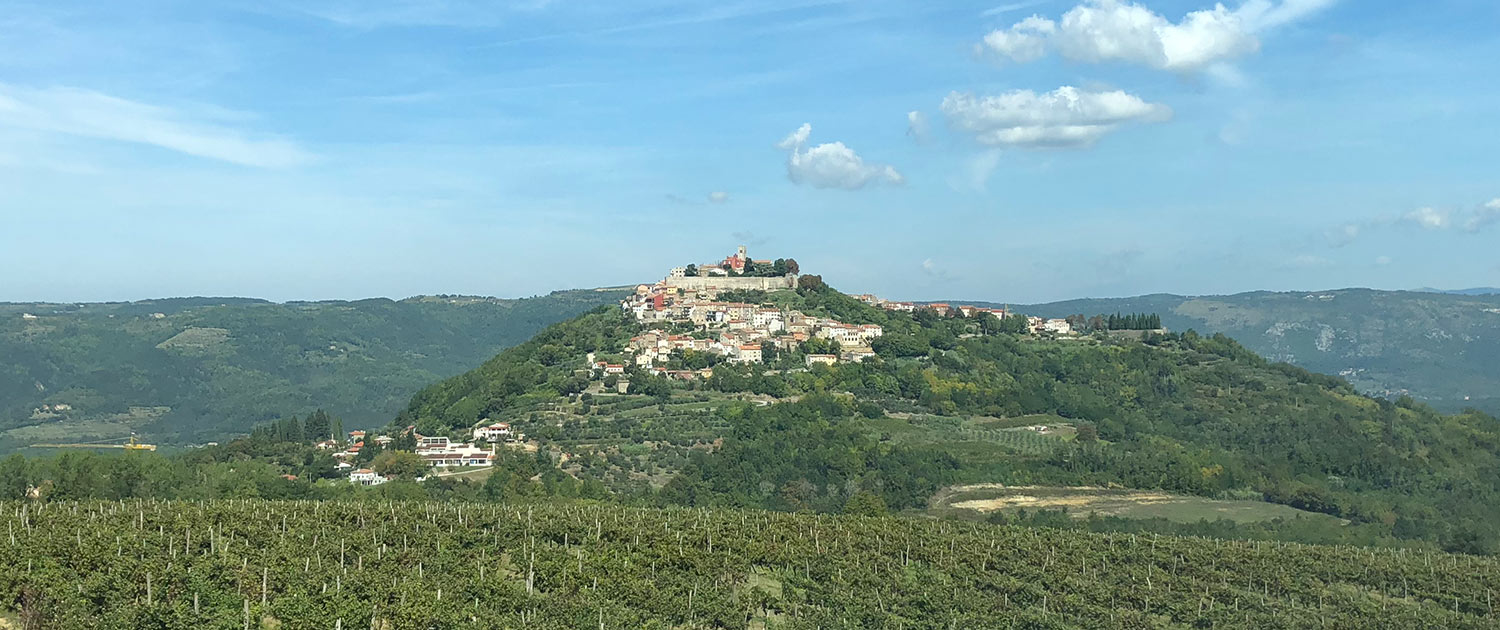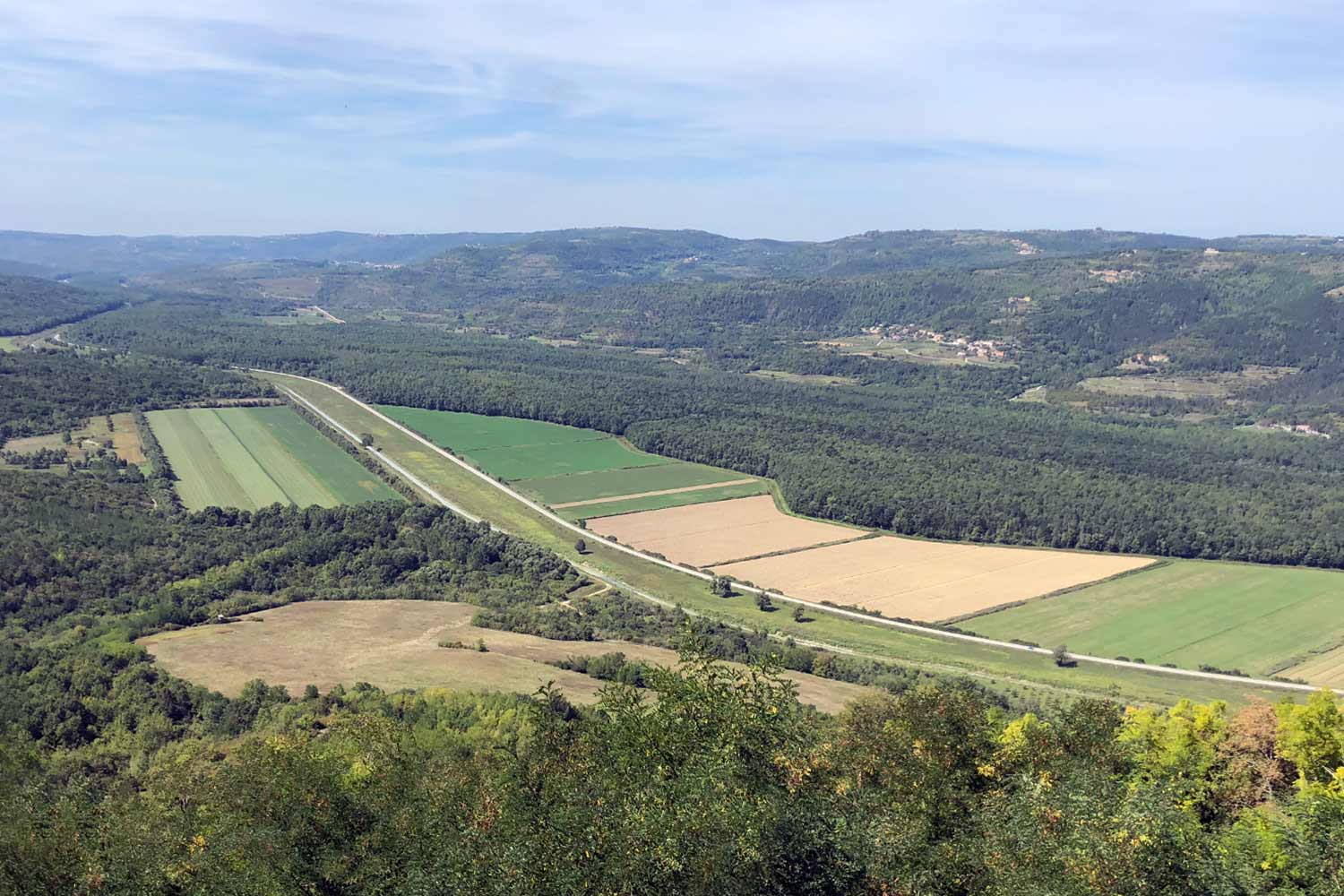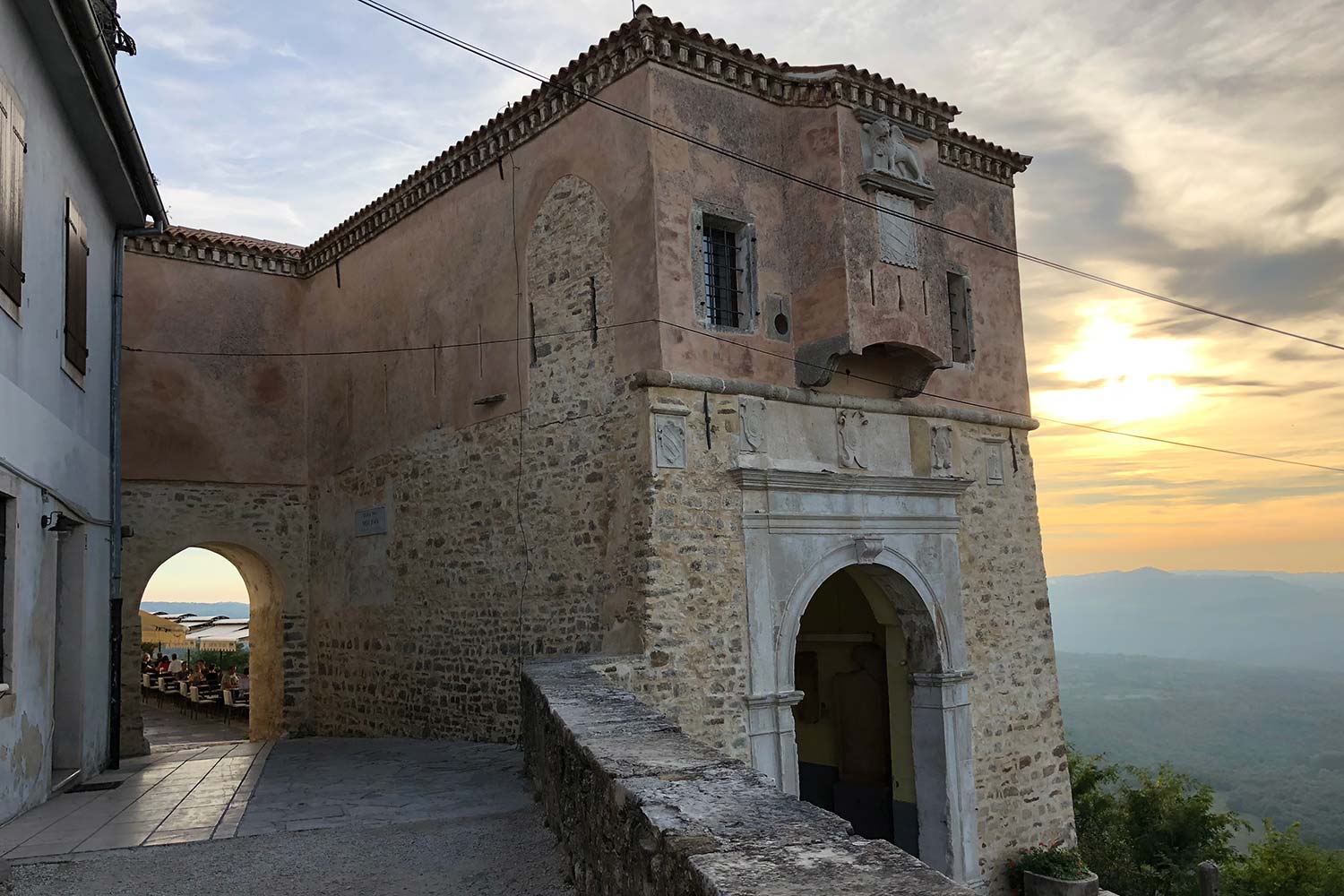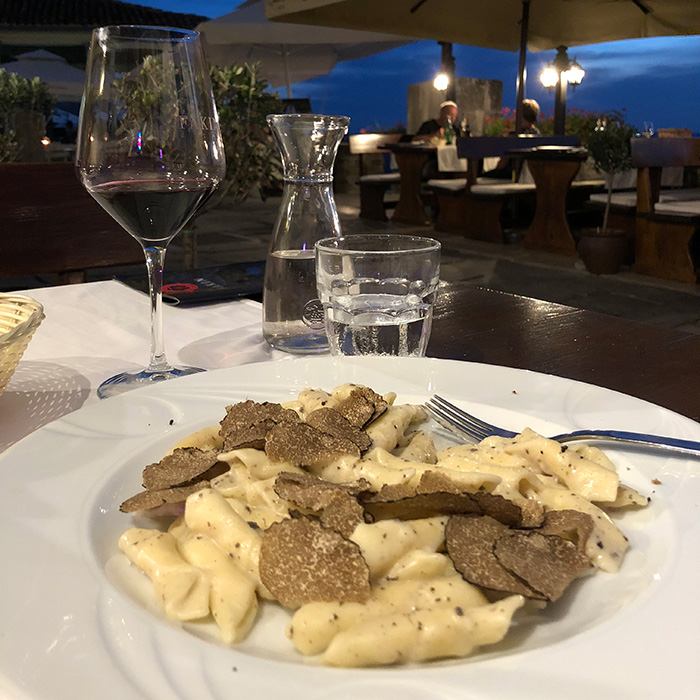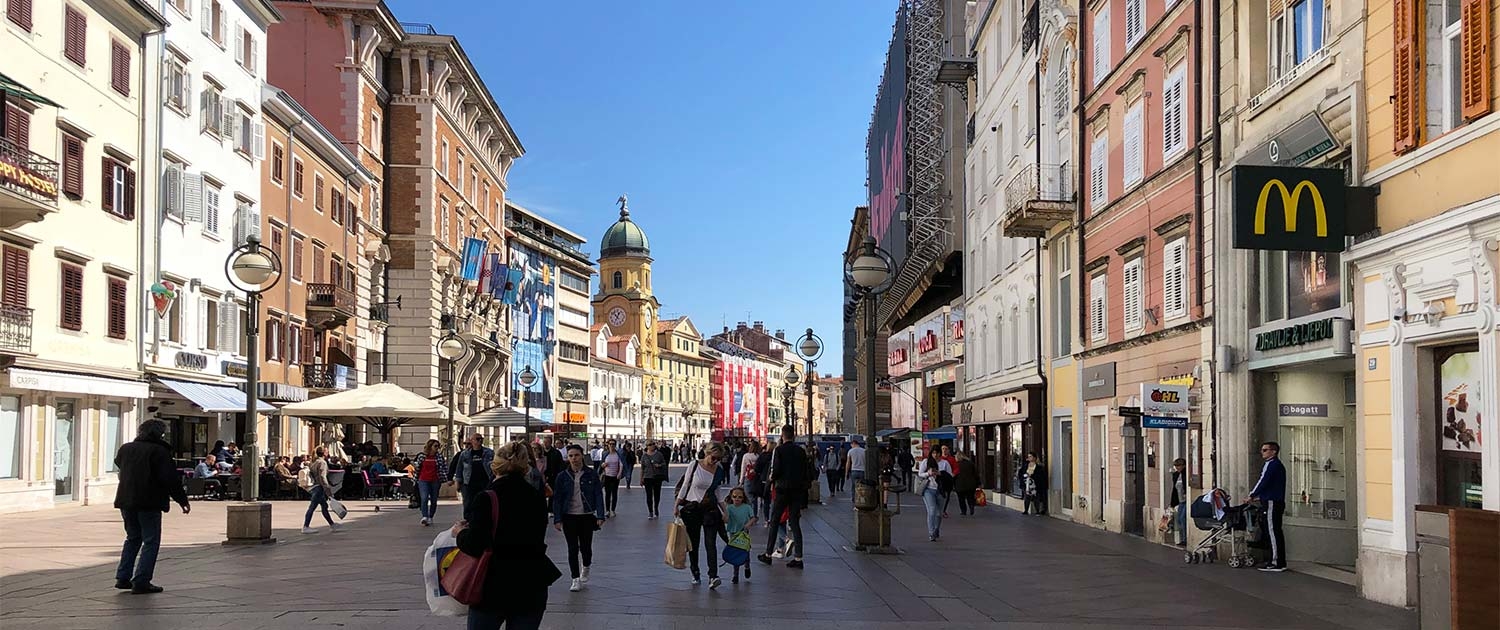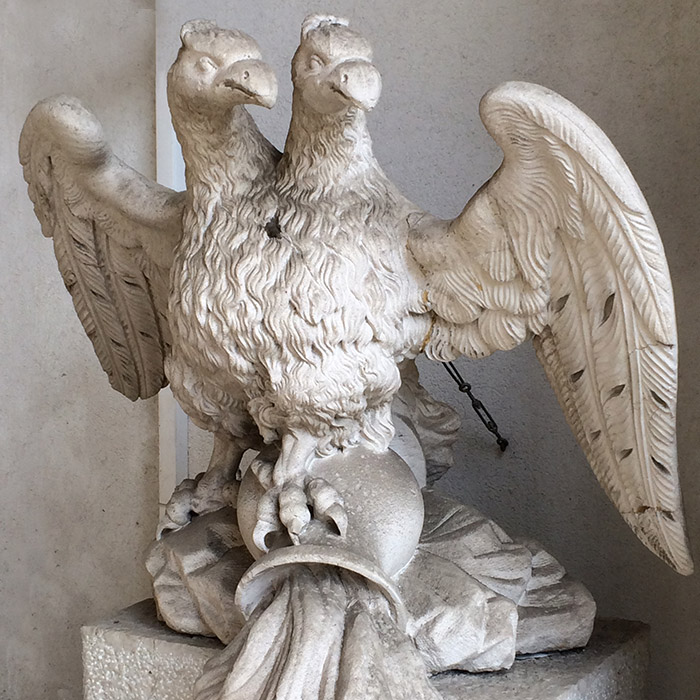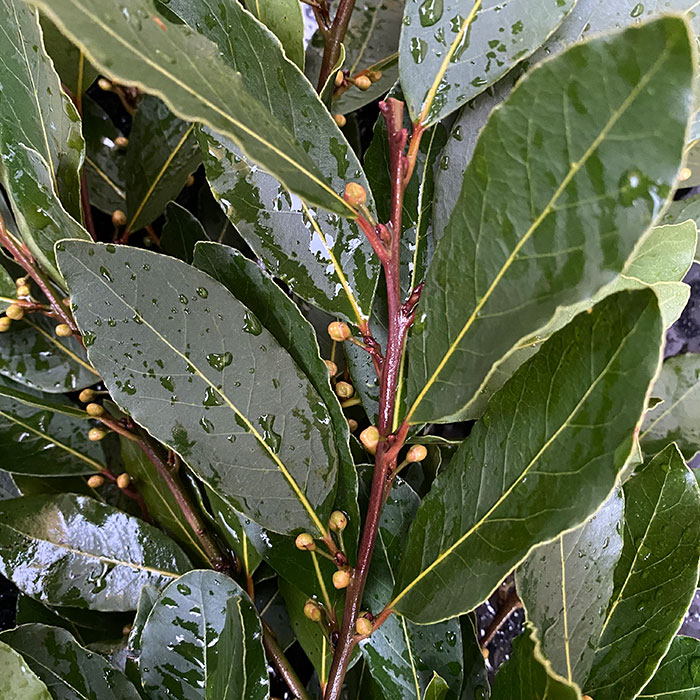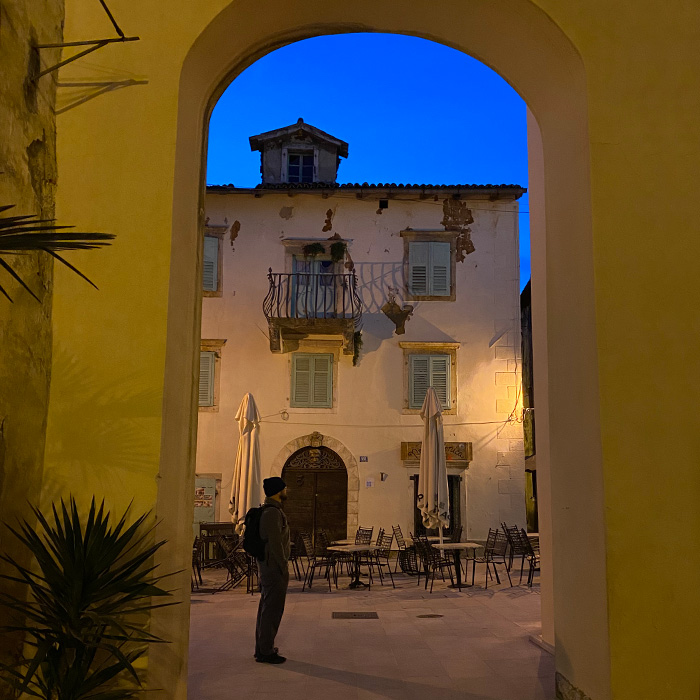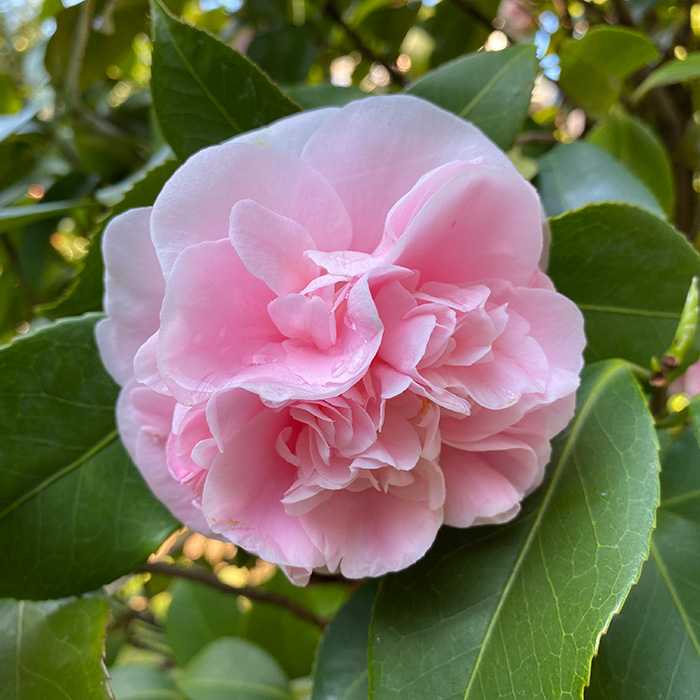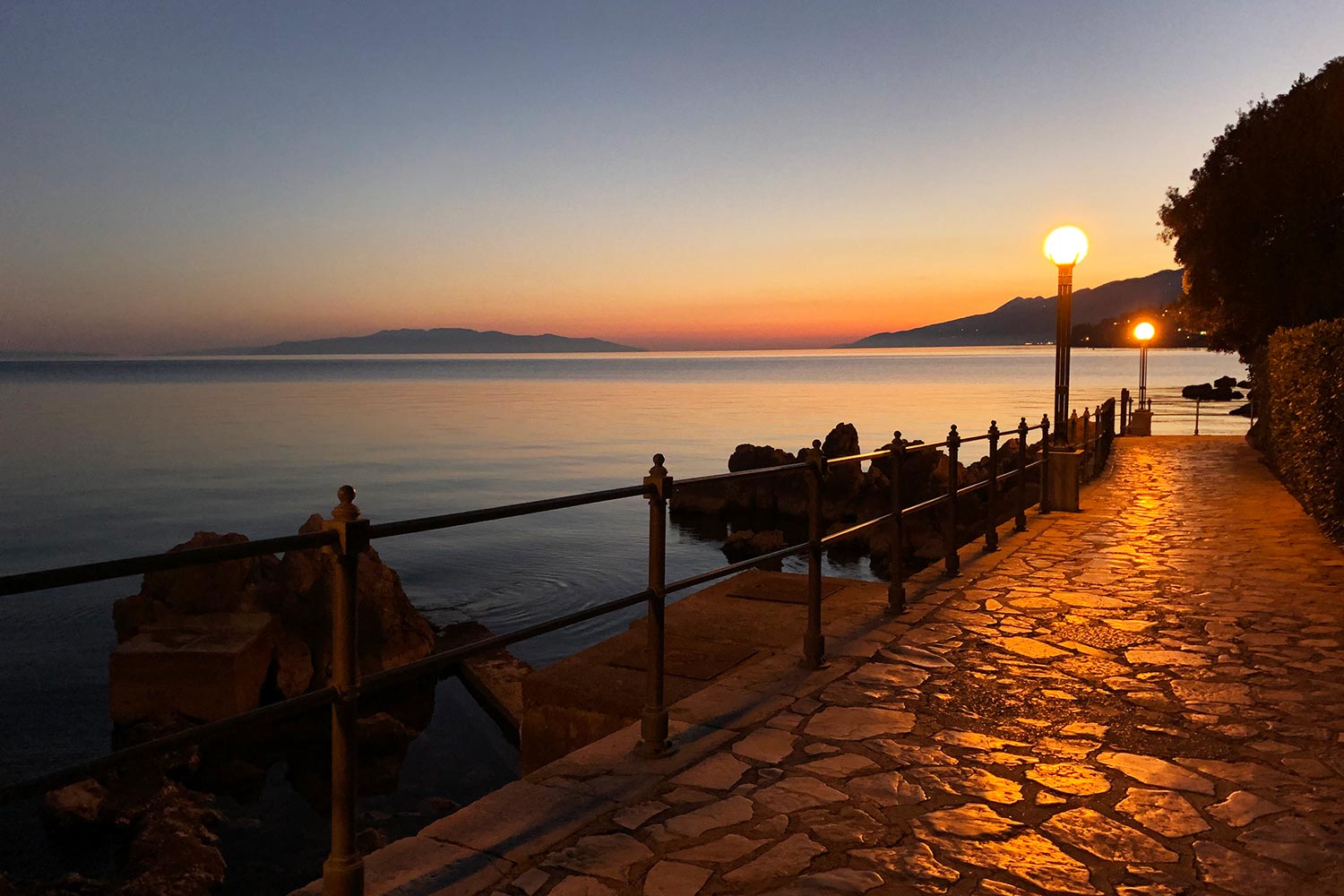Giants and argonauts!
Central Istria has many medieval hilltop towns and villages, dotted around lush green landscape amid forests, vineyards, and farms. These villages grew on the sites of ancient Celtic and Illyrian fortresses, taking advantage of natural defensibility with spectacular views of the surrounding countryside. Legend says that many of these hilltop villages, including Motovun, were built by giants, because how could ordinary men possibly carry the huge stones we find on top of these hills?
According to legend, the Mirna River valley was inhabited by giants who cared for the land, and the river itself was a furrow dug by a giant named Dragonja, who named it after his wife, Mirna. This is the river sailed by the mythical Jason and the Argonauts, and runs past the foot of Motovun. Legends persist that the son of Dragonja still lives in the Istrian forests. Croatian politician and author Vladimir Nazor wrote a story in 1908 named Veli Jože, about a hard-working, gentle giant living near Motovun; the story is an allegory representing the struggle of Croats for autonomy during the time of Venetian rule.
Motovun is perched on a hill that is 270 meters above sea level—and when we say “perched,” the views from the town’s terraces and 13th-century Venetian walls can make you feel like you are soaring high above the Istrian countryside. A 13th-century Romanesque-Gothic bell tower tops the hill, adjacent to the 17th-century Parish Church of Sveti Stjepan. The inner wall of the 1607 Twin Gates at the top of the hill showcases stone coats of arms from Motovun’s historic ruling families, as well as 1st-century Roman tombstones. The current loža was built in the 17th century, but a town loža (loggia) was first mentioned in 1331. Because Motovun has preserved its medieval characteristics, it is included on the tentative list for UNESCO World Heritage status.
Across the Mirna River is the protected Motovun Forest, which is a rich source of black truffles and the world’s largest natural habitat for precious white truffles. Nearby are indigenous Teran and Malvazija vineyards; the red Teran grape has been grown on the Istrian Peninsula for more than six centuries, while the white Malvazija Istarska is believed to have originated with the ancient Greeks.
Motovun also has its share of modern culture, including hosting an international film festival every year. And it is the birthplace of race car driver Mario Andretti and his brother Aldo–you can just imagine the boys racing homemade cars down the steep stone streets!
Land of giants and argonauts—and artisans—in beautiful Istria!
Explore the four unique historic and cultural regions of Croatia
The city of Rijeka (known as Fiume in Italian) is the county seat and commercial center of Primorsko-goranska županija (Primorje-Gorski Kotar County) and the third-largest city in Croatia. The area has remnants of ancient castles, and it is said that the residential center, located by the sea in the present-day Old Town, was moved there by the Romans. You can see a Roman gate and ruins near the main pedestrian and shopping street, Korzo.
The first written records of Luka Rijeka (the Port of Rijeka) date from 1281. It was the main port of the Kingdom of Hungary, Yugoslavia, and today, Croatia. Rijeka has always been prized by its European neighbors for its strategic position as the European mainland’s northernmost Mediterranean deepwater port. Because of this prime location, it has seen a tumultuous history and interchange of rulers.
Rijeka is worth a visit for its many museums and wealth of ornate Hungarian and Italian architecture, which stand in contrast against plain-clothes residential towers from the Yugoslav period. The 1638 Katedrala Svetog Vida (Cathedral of St. Vitus, patron saint of Rijeka) is a Baroque Rotunda in the heart of the city. The 1885 Hrvatsko narodno kazalište Zajca (Croatian National Theater Zajc) was built by Austria-Hungary and is part of a two-century legacy of performing arts in Rijeka. On the hill overlooking the city center, the 13th-century Gradina Trsat (Trsat Castle) was built by the Croatian noble family, the Frankopans, on the site of an ancient Illyrian and Roman fortress. Nearby church Gospa Trsatska (Our Lady of Trsat) was built to commemorate the legend of Mary’s house, which was said to have been moved to the site from Nazareth in May of 1291 by angels; the house later disappeared and was found in Loreto, Italy, where it stands today. Over the centuries the church was enlarged to become a Baroque cathedral, and was even visited by the pope.
Today, Rijeka handles most of Croatia’s imports and exports, as well as passengers to the coastline and islands. There is an extensive bus terminal near the port and an airport on the nearby island of Krk. However, it pays to ask a local for tips on getting around—transportation can be a challenge, with poor rail service and bus and ferry schedules that change or stop altogether depending on the season.
Although small by global standards, Rijeka is nonetheless a gateway for products and outside influences, so open attitudes in culture and design can be found living side by side with old traditions. Rijeka has the honor of being named a European Capital of Culture for 2020, alongside Galway, Ireland; it is the first in Croatia since the EU began the program in 1985. But by far the biggest event of the year is the International Karneval Parade, when Korzo explodes with a full day of music and celebration, culminating with the evening arrival of the otherworldly Halubje Zvončari (bell-ringers with animal heads), and the burning of the human-like pust to purge the sins of the year—you’ll just have to experience it to believe it!
Rijeka is home to incredible artisans, both creative and traditional. We’re happy to carry some of their products.
Explore the four unique historic and cultural regions of Croatia
Overlooking the northern end of the Kvarner Bay, with a view that takes in the coastline from the Opatija Riviera clear to Rijeka, is the city of Kastav. Its premier position high on a hilltop has been prized since ancient times, with archaeological finds and historical records confirming the presence of such groups as the Illyrians, Romans, Ostrogoths, and Greeks. The area was populated by Croats beginning in the 7th Century.
Kastav holds the remains of a medieval hilltop fortress built with stone walls and towers, some of which still stand today. The city’s status as a regional political and administrative center was evidenced by the Kastav Statute of 1400, a historical legal document written in the čakavian dialect with an ancient Croatian Glagolitic script. Kastav’s history has been no less turbulent than that of other coveted regions; over the centuries, both secular and religious ruling authorities have claimed the territory, including the Habsburgs, Jesuits, and the Kingdoms of Italy and Yugoslavia.
Today, Kastav is well respected among its neighbors, preserving its unique culture with historical buildings and monuments, ethnographic museums, events, and legends. You can read a few of the city’s colorful stories here. Every Karneval season before Ash Wednesday, the Zvončari bell-ringers, wearing frightening masks, animal skins, and huge bells, walk through the local villages and gather in Kastav, chasing away both evil spirits and winter itself, recreating a tradition that is said to have begun in pre-Christian times. Bela Nedeja, the historic celebration of new wine, was mentioned in the Kastav Statute of 1400 and is still held every October. A new tradition, the annual Kastav Summer of Culture, featuring music, drama, film, and exhibitions, attracts performers and guests from all over the world. As it is said in local dialect, “aš se va Grade vaveki neš dogaja” (“because in Kastav, there is always something going on”).
Kastav has a long history of craftsmanship, as can be seen by visiting its ethnographic museums.
We have found some new and traditional crafts from this historic city.
Explore the four unique historic and cultural regions of Croatia
When you’re cooking that beautiful stew and reach for your precious jar of whole bay leaves, you breathe in the subtle aroma of the Mediterranean, reminiscent of warm sun, blue sea, and aromatic foliage. The bay tree, or laurel (laurus nobilis), grows wild around Lovran—a town which was named centuries ago after the tree’s Croatian name, lovor. Bay leaves are featured on Lovran’s coat of arms, and were used in ancient Greek and Roman victors’ crowns, from which we get the term “laurels” to denote honor. Bay leaves are not only used to flavor dishes, but ground leaves and oils are also used in folk remedies and alternative medicine.
Lovran is one of the oldest settlements in the northern Adriatic, with legends dating it from the Roman era in the first century BC. In the Middle Ages it was an important urban and shipbuilding center. When other sites gained prominence, like nearby Rijeka, Pula, and Trieste, Lovran settled into a quiet tourist center that was favored by the Austro-Hungarian nobility, who built many of the lovely villas we see today.
Enjoying a mild Mediterranean climate and the shelter of Mount Učka, Lovran is said to grow the finest maruni (chestnuts) in the world, and has celebrated that for the past 45 years with an annual festival called Marunada. Lovran has a rich architectural heritage, including the 12th-century Romanesque parish church of patron Sveti Juraj (St. George), with its historic frescoes and Glagolitic inscriptions. The narrow, winding streets of the medieval old town are filled with shops and cafés. Elegant Austro-Hungarian and Italian villas and parks surround the town. Lovran is the western terminus of the 12km Lungomare, a seaside promenade running the length of the Opatija Riviera.
Explore the four unique historic and cultural regions of Croatia
Across the Kvarner Gulf from Rijeka is Opatija, a lovely seaside resort with a rich history of tourism, wellness, and gastronomy dating back more than 170 years. Located at the foot of Mount Učka and protected by the islands of Krk and Cres, Opatija enjoys a mostly mild Mediterranean climate year round. It’s no surprise that this ideal location has been visited by queens, kings, czars, and celebrities.
Today, visitors from all over the world stroll among Opatija’s ornate, colorful villas and lush botanic gardens. Opatija owes much of its architectural beauty to the Austro-Hungarians, who built homes, hotels, gardens, and walking trails to enjoy the healthy climate and surroundings. The first holiday home, Villa Angiolina, was built in 1844 and hosted a who’s who of European dignitaries.
In 1873 the Austrian Southern Railway built a direct rail link from Vienna, paving the way for tourism to Opatija, and in 1884, the railway director opened the first Adriatic hotel and health resort, Hotel Quarnero. Opatija was established as the playground of the Austro-Hungarian aristocracy and the birthplace of Croatian tourism. Villa Angiolina still stands proudly among the opulent buildings of times past, set amid the seaside botanic garden that bears her name; today the villa welcomes guests to Hrvatski Muzej Turizma, Croatia’s only museum dedicated to tourism.
Opatija is an idyllic setting for walkers. Not built around a tight, defensible medieval core as is often seen in European towns, Opatija was laid out along the sea for health and enjoyment. In 1911, the 12km Lungomare was completed, a walkway along the edge of the sea from fishing village Volosko to historic Lovran. The 7km Carmen Silva trail runs parallel to the sea from up in the hills, traversing Opatija on forest trails. In between the two paths run paved stubišta (stairways) and šetališta (walkways), winding between villas and around gardens. Already a lovely tourist town on the surface, Opatija also rewards those who take the time to dig deeper and explore.
We’re happy to carry some beautiful products designed in Opatija, home of ornate villas and opulent gardens.

